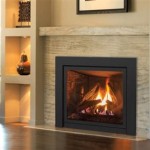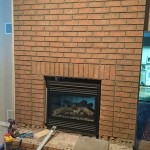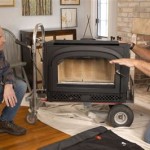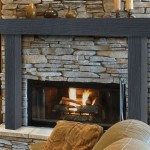Contemporary Fireplace Tile Ideas: Elevating Your Hearth Design
Fireplaces, historically serving as primary heat sources, have evolved into prominent design features within modern homes. Contemporary fireplaces represent a fusion of functionality and aesthetics, with tile playing a pivotal role in achieving a desired style. The selection of fireplace tile is a crucial decision, influencing not only the visual impact of the hearth but also the overall ambiance of the living space. This article explores various contemporary fireplace tile ideas, offering insights into materials, patterns, and design considerations tailored to modern sensibilities.
Understanding the Versatility of Tile Materials
The range of materials available for contemporary fireplace tile applications is extensive, each offering unique characteristics in terms of appearance, durability, and maintenance. The choice of material profoundly impacts the aesthetic and functional lifespan of the fireplace design.
Porcelain Tile: Porcelain tile is a popular choice due to its exceptional durability and resistance to heat, stains, and water. Manufactured from fine clay and fired at high temperatures, porcelain tile possesses a low porosity, making it suitable for both indoor and outdoor fireplace surrounds. Its versatility extends to mimicking the appearance of natural stone, wood, or concrete, allowing for a wide array of design possibilities. Large-format porcelain tiles minimize grout lines, creating a seamless and visually appealing surface. From sleek, minimalist designs to textured, tactile finishes, porcelain tiles provide a contemporary aesthetic that complements various architectural styles.
Ceramic Tile: Ceramic tile, another widely used option, is typically more affordable than porcelain. While less dense than porcelain, ceramic tile still offers adequate heat resistance for fireplace surrounds. It is available in a vast array of colors, shapes, and sizes, offering designers considerable flexibility. Ceramic tiles can be glazed with various finishes, including glossy, matte, or textured surfaces, allowing for customization to match specific design preferences. However, ceramic tile is generally more porous than porcelain and may be more susceptible to staining and water damage.
Natural Stone Tile: Natural stone tile, including materials such as marble, granite, slate, and travertine, exudes a sense of luxury and timelessness. Each natural stone tile possesses unique veining, color variations, and textures, adding character and individuality to the fireplace surround. Marble offers a sophisticated and elegant aesthetic, while granite provides exceptional durability and resistance to heat. Slate tiles introduce a rustic and earthy touch, while travertine offers a warm and inviting texture. However, natural stone requires sealing to protect it from stains and moisture, and certain stones may be more prone to scratching or etching.
Glass Tile: Glass tile creates a visually striking and contemporary ambiance. Its reflective surface enhances light and adds a sense of depth to the fireplace surround. Glass tiles are available in a range of colors, sizes, and shapes, including mosaic patterns and larger format options. They are relatively easy to clean and maintain, and their non-porous nature makes them resistant to stains and water damage. However, glass tiles can be more expensive than other tile materials and may require specialized installation techniques.
Concrete Tile: Concrete tile offers an industrial-chic aesthetic, characterized by its raw, minimalist appeal. Its inherent texture and subtle variations in color create a unique and contemporary look. Concrete tiles are durable and heat-resistant, making them suitable for fireplace surrounds. They can be sealed to protect them from stains and moisture. Concrete tiles are available in various shapes and sizes, allowing for creative design possibilities. This material is particularly well-suited for modern and minimalist interiors.
Exploring Contemporary Tile Patterns and Layouts
Beyond the material, the pattern and layout of the tiles significantly influence the overall aesthetic of the fireplace. Contemporary designs often embrace simplicity and geometric patterns, while also exploring innovative and unconventional arrangements.
Horizontal Stacked Layout: The horizontal stacked layout, also known as a running bond, is a classic and versatile pattern that works well with various tile materials and sizes. It creates a clean and streamlined look, emphasizing the horizontal lines of the fireplace. This pattern is particularly well-suited for rectangular or subway tiles and can be adapted to both traditional and contemporary designs. The horizontal orientation can visually widen the fireplace surround, making it appear more substantial.
Vertical Stacked Layout: The vertical stacked layout offers a modern and contemporary alternative to the horizontal pattern. By stacking tiles vertically, the design emphasizes height and creates a sense of visual elongation. This pattern works particularly well with long, narrow tiles and can be used to draw the eye upward, creating a focal point in the room. The vertical orientation is often employed in minimalist and contemporary interiors.
Herringbone Pattern: The herringbone pattern is a classic and sophisticated design that adds visual interest and texture to the fireplace surround. It involves arranging rectangular tiles in a staggered, zig-zag pattern, creating a distinctive V-shaped design. The herringbone pattern works well with various tile materials, including natural stone, porcelain, and ceramic. It can be applied to the entire fireplace surround or used as an accent feature. This pattern adds a touch of elegance and sophistication to any space.
Geometric Patterns: Geometric patterns, such as hexagons, triangles, and squares, offer a modern and dynamic aesthetic for fireplace tile designs. These patterns can be created using individual tiles or by incorporating pre-fabricated geometric tile sheets. Geometric patterns add visual complexity and can be used to create a focal point or to define specific areas of the fireplace surround. They are particularly well-suited for contemporary and eclectic interiors.
Large-Format Tiles: Large-format tiles, typically measuring 24 inches or more in length or width, have gained popularity in contemporary design due to their ability to minimize grout lines and create a seamless, expansive look. These tiles can be used on the entire fireplace surround or as a focal point, emphasizing the scale and proportions of the design. Large-format tiles are available in various materials, including porcelain, ceramic, and natural stone. They are particularly well-suited for minimalist and modern interiors.
Mosaic Tile Patterns: Mosaic tiles, consisting of small individual tiles arranged in intricate patterns, offer a versatile and artistic approach to fireplace design. Mosaic patterns can be customized to create unique designs, incorporating various colors, shapes, and textures. Mosaic tiles can be used as an accent feature, framing the fireplace opening, or as a decorative border. They are particularly well-suited for adding a touch of personality and individuality to the fireplace.
Key Design Considerations for Contemporary Fireplace Tile
Beyond material and pattern, several design considerations are paramount to achieving a cohesive and visually appealing contemporary fireplace.
Color Palette: The color palette of the fireplace tile should complement the overall color scheme of the room. Neutral colors, such as white, gray, and beige, are popular choices for contemporary designs, as they provide a clean and versatile backdrop. However, bold and vibrant colors can also be used to create a statement and add personality to the space. Consider the existing furniture, wall colors, and flooring materials when selecting the color of the fireplace tile. Monochromatic schemes using varying shades of a single color can create a sophisticated and minimalist aesthetic. Contrast is also a powerful tool; using dark tiles against light walls or vice versa can create a dramatic focal point.
Grout Selection: The grout color and width can significantly impact the overall appearance of the fireplace tile. Matching the grout color to the tile creates a seamless and uniform look, minimizing the visual impact of the grout lines. Contrasting grout colors can highlight the individual tiles and add visual interest. Narrow grout lines are typically preferred in contemporary designs, as they create a cleaner and more streamlined look. Epoxy grout is a durable and stain-resistant option that is particularly well-suited for fireplace surrounds.
Fireplace Surround Style: The style of the fireplace surround should align with the overall architectural style of the home. Clean lines and minimalist details are characteristic of contemporary designs, while traditional designs may incorporate more elaborate moldings and embellishments. Consider the proportions of the fireplace surround in relation to the size of the room. A large and imposing fireplace may overwhelm a small space, while a small fireplace may get lost in a large room. Custom-built fireplace surrounds can be tailored to specific design preferences and can incorporate unique features, such as built-in storage or shelving.
Scale and Proportion: Thoughtful consideration of scale and proportion is critical to a successful fireplace design. Larger tiles often lend themselves to a more contemporary feel, minimizing grout lines and creating a seamless expanse. The size of the tile should be proportionate to the scale of the fireplace and the surrounding room. Overly small tiles on a very large fireplace can appear busy and disjointed, while excessively large tiles in a small space can feel overwhelming. Balancing the dimensions of the tile with the overall architectural context is crucial for achieving visual harmony.
Texture and Finish: The texture and finish of the tile can significantly enhance the tactile and visual appeal of the fireplace. Smooth and polished tiles create a sleek and contemporary look, while textured tiles add depth and dimension. Matte finishes are often preferred in contemporary designs, as they provide a subtle and understated aesthetic. Consider the lighting in the room when selecting the finish of the tile, as glossy tiles can reflect light and create glare. Tactile finishes, such as stone or wood-look tiles, can add warmth and character to the fireplace surround.
By carefully considering these materials, patterns, and design considerations, homeowners and designers can create contemporary fireplaces that are both aesthetically pleasing and functionally effective, enhancing the ambiance and value of the living space.

Fireplace Feature Wall Ideas Queen City Stone Tile

30 Most Beautiful Fireplace Tile Ideas For 2024 Decor Home Brick Makeover Remodel Contemporary Designs

Fireplace Tile Ideas Designs To Inspire You

Farmhouse Fireplace Tile Ideas 11 Ways To Enhance A Fiery Focal Point Atlas Ceramics

Fire Up Your Design Trendy And Unique Fireplace Tile Ideas To Try Now Belk

30 Most Beautiful Fireplace Tile Ideas For 2024 Decor Home Modern Design

Fireplace Tile Ideas Designs To Inspire You

Fireplace Tiles Best 253 Ideas Designs 2024 Ramirro

53 Best Fireplace Tile Ideas And Designs With S For 2024 Mantel Decor Design

Red Hot Fireplace Ideas
Related Posts








